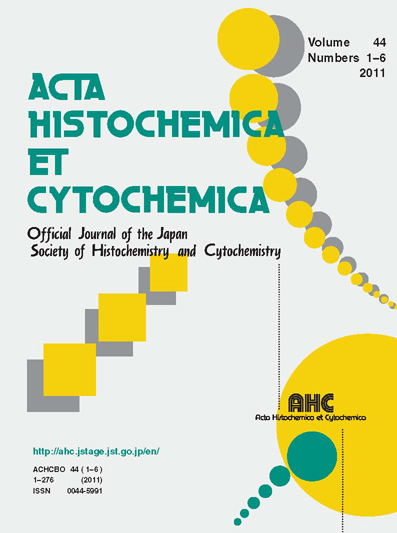
- Issue 6 Pages 187-
- Issue 5 Pages 161-
- Issue 4 Pages 143-
- Issue 3 Pages 107-
- Issue 2 Pages 31-
- Issue 1 Pages 1-
- |<
- <
- 1
- >
- >|
-
 Ryuma Haraguchi, Riko Kitazawa, Yuta Yanagihara, Yuuki Imai, Sohei Kit ...Article type: Regular Article
Ryuma Haraguchi, Riko Kitazawa, Yuta Yanagihara, Yuuki Imai, Sohei Kit ...Article type: Regular Article
2025Volume 58Issue 6 Pages 187-198
Published: December 24, 2025
Released on J-STAGE: December 24, 2025
Advance online publication: November 14, 2025JOURNAL OPEN ACCESS FULL-TEXT HTML
Supplementary materialThe Hedgehog (Hh) signaling pathway is essential for organ development and tissue homeostasis; its dysregulation is associated with various congenital anomalies and human diseases. Hedgehog-interacting protein 1 (Hhip1) functions as a membrane-bound negative regulator of Hh signaling by directly binding to Hh ligands and limiting their activity in target tissues. While global knockout models have demonstrated the importance of Hhip1 during embryonic development, perinatal lethality has precluded investigations into its postnatal functions. To overcome this limitation, a novel conditional allele of Hhip1 (hereafter referred to as the Hhip1flox or floxed allele, in which exon 2 is flanked by loxP sites) was generated using CRISPR/Cas9-based gene targeting. Cre-mediated excision of exon 2 produced a conditional null allele (Hhip1ex2Δ) with a frameshift mutation that annulled the Hedgehog ligand-binding domain. Germline recombination through CMV-Cre recapitulated the known pulmonary defects of global Hhip1 knockout mice, validating the model’s functionality. Furthermore, using Prx1-Cre to generate limb-specific Hhip1 conditional knockout (cKO) mice, a previously unrecognized role for Hhip1 in maintaining postnatal growth plate architecture was detected. cKO mice exhibited progressive growth plate expansion and long bone overgrowth, together with sustained upregulation of Gli1 expression. These findings establish the Hhip1flox model as a powerful tool for tissue- and stage-specific functional studies of Hhip1 and provide new insights into the spatiotemporal regulation of Hedgehog signaling in development and disease. Importantly, this model offers broad utility for dissecting Hedgehog signaling mechanisms across diverse biological contexts and disease models.
View full abstractDownload PDF (1726K) Full view HTML
- |<
- <
- 1
- >
- >|